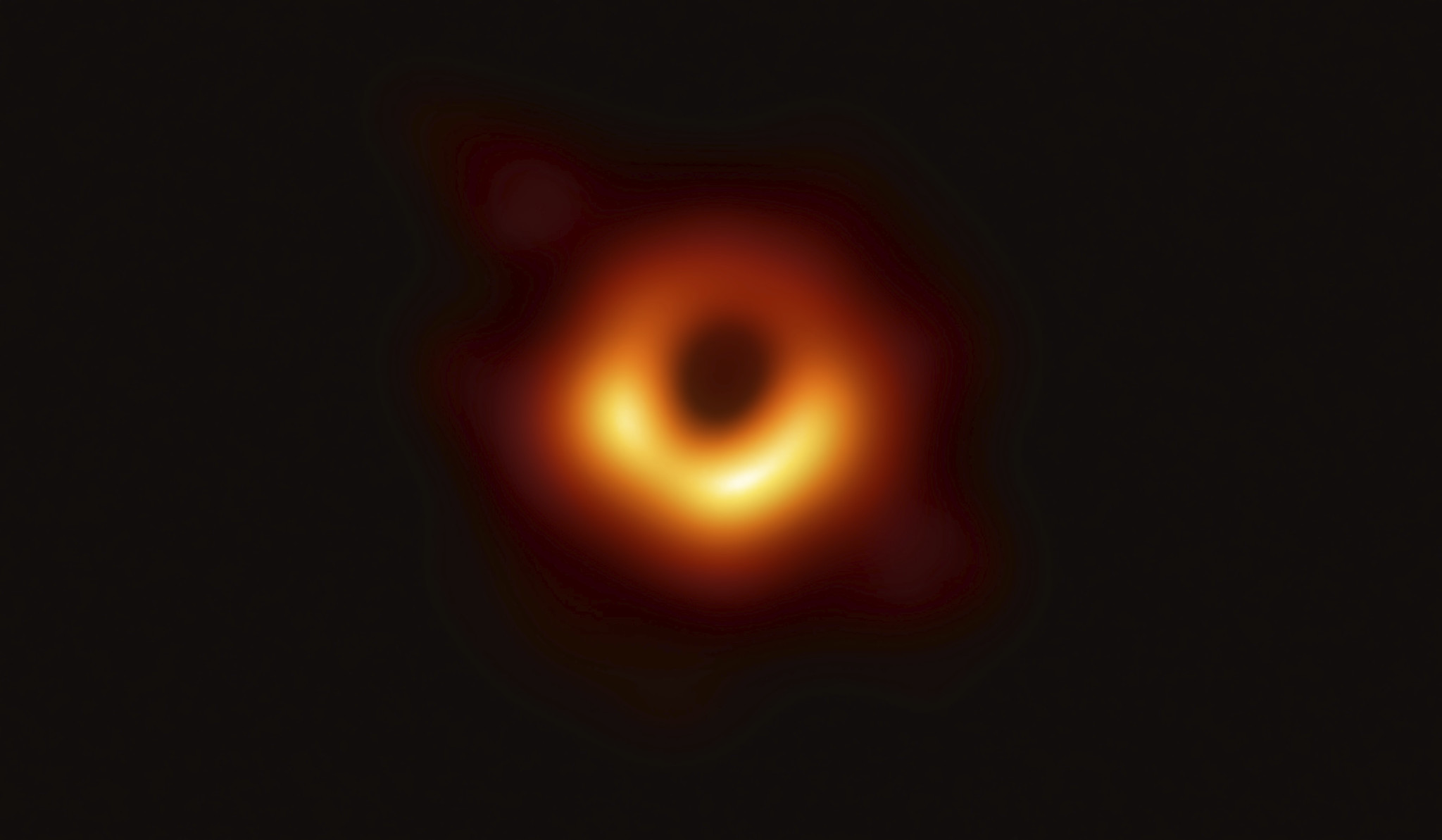The Very First Image Of A Black Hole
After 20 years of coordinating a global network of radio dishes, the Event Horizon Telescope photographed the shadow of a black hole.

Editor’s note: This is a breaking news story and has been updated with new information throughout.
Black holes have evaded a real closeup for centuries, the elusive beasts of the universe slipping by unseen—until now. Today, the international team of the Event Horizon Telescope (EHT) released the first-ever image of a black hole darkened by the effects of the event horizon, the invisible boundary where nothing, not gas, dust, or even light, can escape its powerful gravitational grasp.
“We have seen what we thought was unseeable,” says EHT Director Shep Doeleman, during the April 10 press conference. “This is a remarkable achievement. What you’re seeing here is the last photon orbit. What you’re seeing is evidence of the event horizon.”
The image is 20 years in the making. The high-angular resolution image—made up of many snapshots like a collage—depicts the 6 billion solar-mass black hole at the center of the galaxy Messier 87, or M87, some 55 million light years away. It reveals that the theorized event horizon, that inescapable pull at the membrane of the black hole, exists. And it backs up Albert Einstein’s theory of general relativity.
“We’ve been studying black holes for so long,” says France A. Córdova, director of the National Science Foundation, during the April 10 press conference. “It’s sometimes easy to forget that none of us have actually seen one.”
“It’s basically like Interstellar [the film], except that for the first time we’re hoping to do it with data,” astrophysicist Feryal Özel, an Event Horizon Telescope team member stationed at the telescope arrays in Arizona, said to Science Friday in a phone interview before the Wednesday announcement.
A simulated video showing the turbulent plasma in the extreme environment around a black hole. Credit: Chi-kwan Chan/University of Arizona
Past visualizations of black holes come from what researchers have simulated with data: A pit of darkness in the midst of a field of sparkling stars and galaxies; the blinding, ethereal accretion disk from the film Interstellar; or as Shep Doeleman explained in a 2012 Science Friday interview, “a rubber screen with a bowling ball in it that bends the rubber screen down.” But the image produced by the EHT reveals the shadow of the black hole—a soft ring of light illuminating an inky abyss. This glow indicates that the black hole is spinning.
To achieve the resolution of the black hole’s event horizon, the team needed an enormous, powerful telescope, one with 2,000 times the magnifying power of the Hubble Space Telescope. The Event Horizon Telescope is actually a network of eight radio dishes dotting the globe in high altitude sites, from the South Pole to Atacama, Chile, that together creates a virtual telescope the size of the planet Earth, explained Özel.
The team set the telescope array to 1.3 millimeter wavelengths. The short radio wavelengths were the perfect wavelength to pass through the gas that obstructs the shadow of the black hole, while giving the highest resolution possible. “At [other] wavelengths there’s just too much light there,” Özel said. This “obscures the blackness that you’re trying to see there.”
Click the markers on the interactive map to learn more about each site in the Event Horizon Telescope array. Green icons mark current sites, purple icons mark future sites, and blue icons mark historic sites. Credit: Event Horizon Telescope
The data from this image is a launching point for those researchers who want to know what know what is happening inside what Stephen Hawking described as “the edge of a shadow—the shadow of impending doom.”
“The event horizon is this very dangerous and spooky boundary around the black hole through which once you go, in any dimension, you’re never coming back,” Doeleman told Science Friday back in 2012, when EHT first measured the inner orbit of the event horizon of the supermassive black hole in M87. “The energetics around the black hole make it a point in the universe that is really beyond our everyday conception of the way things work.”
Scientists may soon shed light on the black hole’s “shadow.” #EHTblackhole @ehtelescope https://t.co/B886Ne5X2w pic.twitter.com/5UifupxvRm
— Science Friday (@scifri) April 9, 2019
The M87 black hole is one of two black holes EHT is working on—data from the other black hole, Sagittarius A* at the heart of the Milky Way galaxy, may be released later as the team continues to home in on its complexities.
The image of the black hole’s shadow released today pushes our view of the universe, and brings us a step closer in understanding how these celestial bodies behave.
“As with all great discoveries, this is just the beginning,” says Doeleman.
Science Friday will be following the story as it develops this week. Tune in to Friday’s show for a live conversation with EHT team members and black hole scientists, and discover what this new data will mean for future research.
Invest in quality science journalism by making a donation to Science Friday.
Lauren J. Young was Science Friday’s digital producer. When she’s not shelving books as a library assistant, she’s adding to her impressive Pez dispenser collection.